 |
|
Vulcan Cert-1 (Vulcan) 8 January 2024 |
Space Launch Complex 41 Cape Canaveral Space Force Station |
| A United Launch Alliance (ULA) Vulcan VC2S rocket launched the first certification mission for ULA from Space Launch Complex-41 at Cape Canaveral Space Force Station at 2:18 a.m. on 8 January 2024. The Cert-1 test flight mission includes two payloads, the first Peregrine Lunar Lander, Peregrine Mission One (PM1) for Astrobotic as part of NASA’s Commercial Lunar Payload Services (CLPS) initiative to deliver science and technology to the lunar surface. The second payload is Celestis’ Memorial Spaceflights deep space Voyager mission, the Enterprise Flight. | |
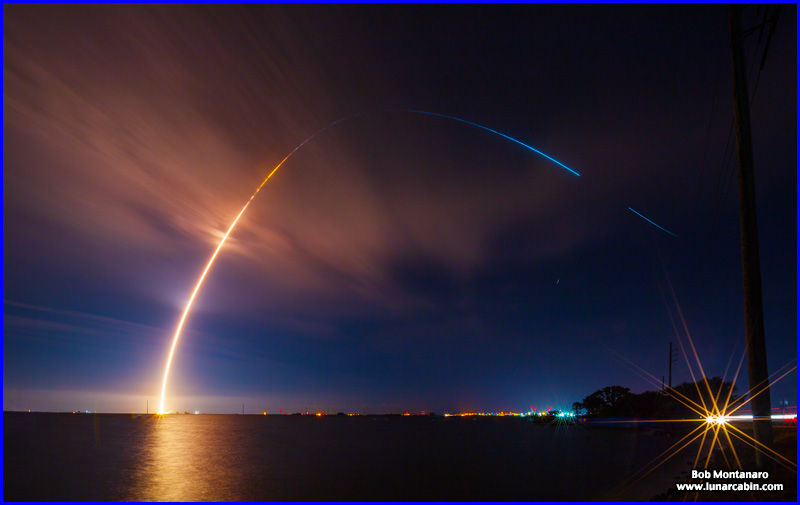 |
|
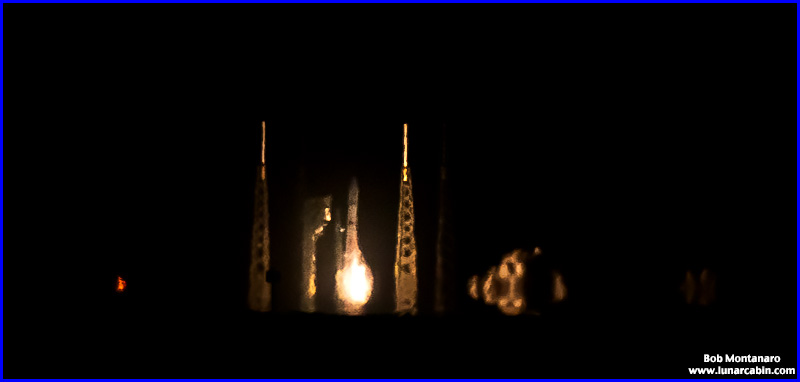 |
|
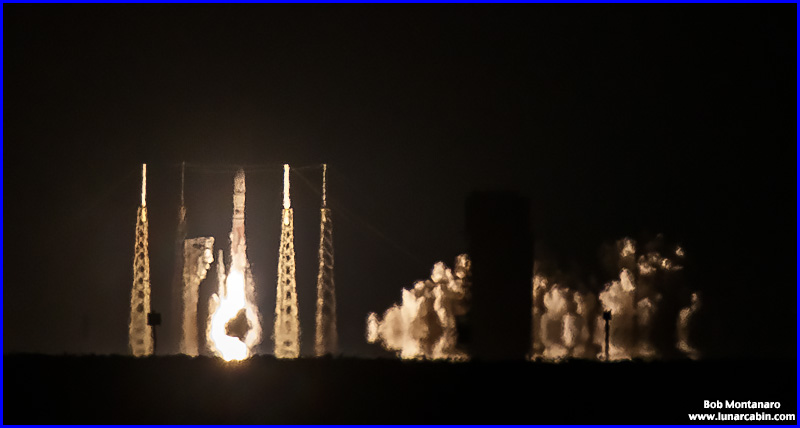 |
|
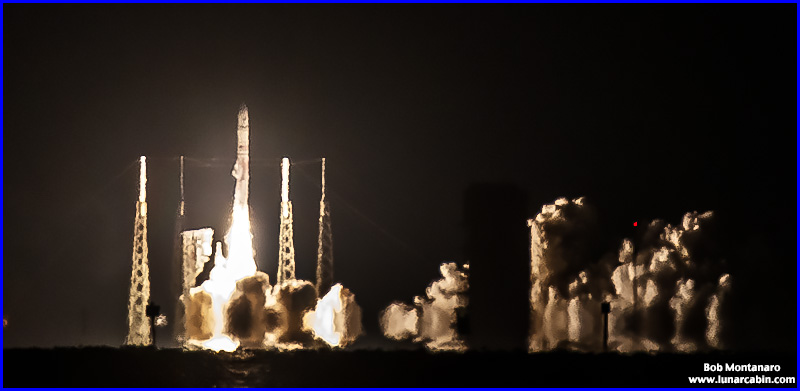 |
|
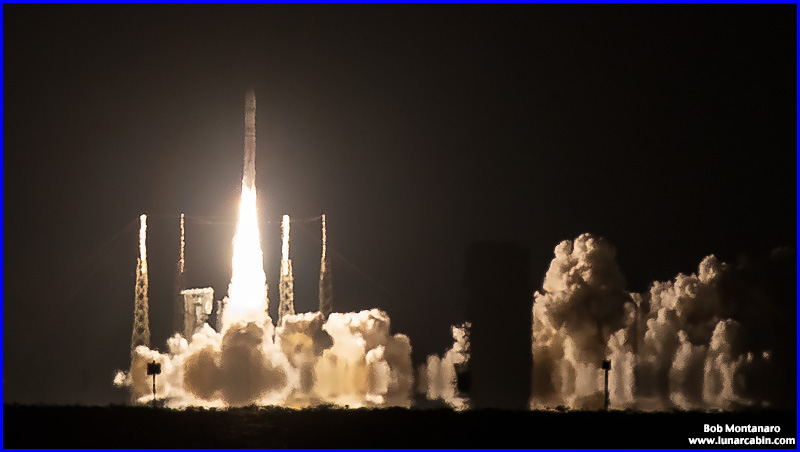 |
|
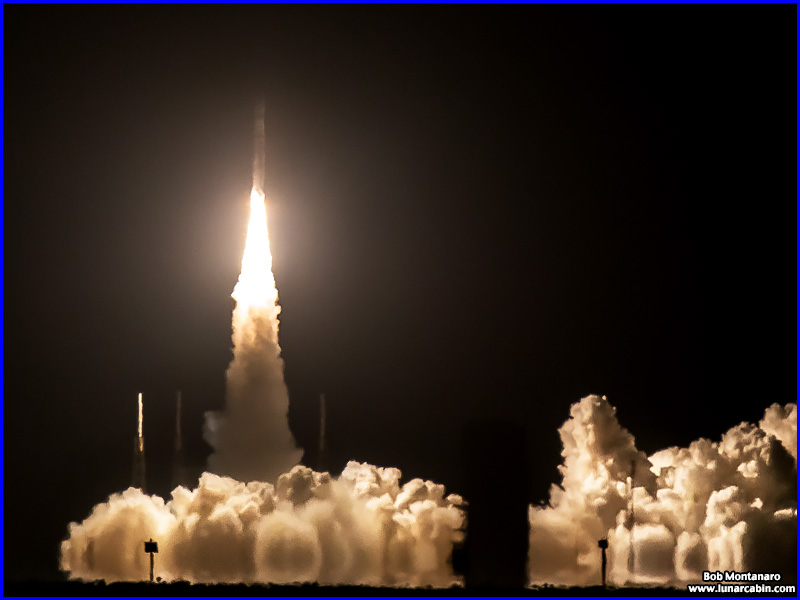 |
|
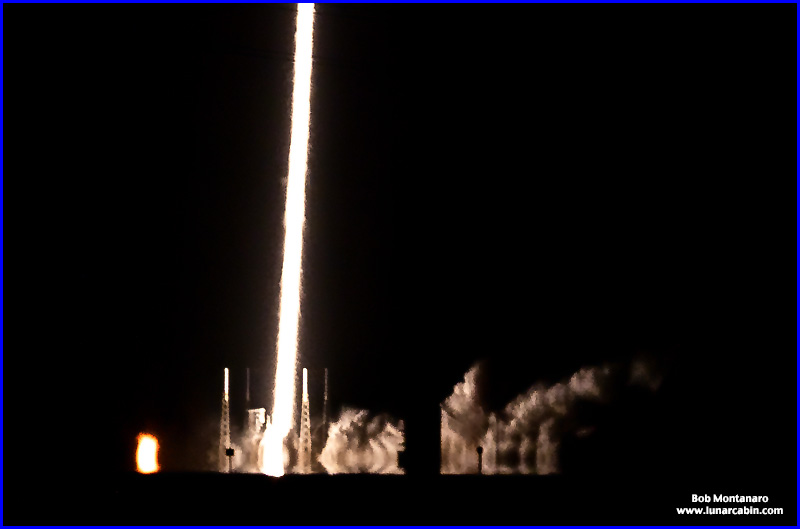 |
|
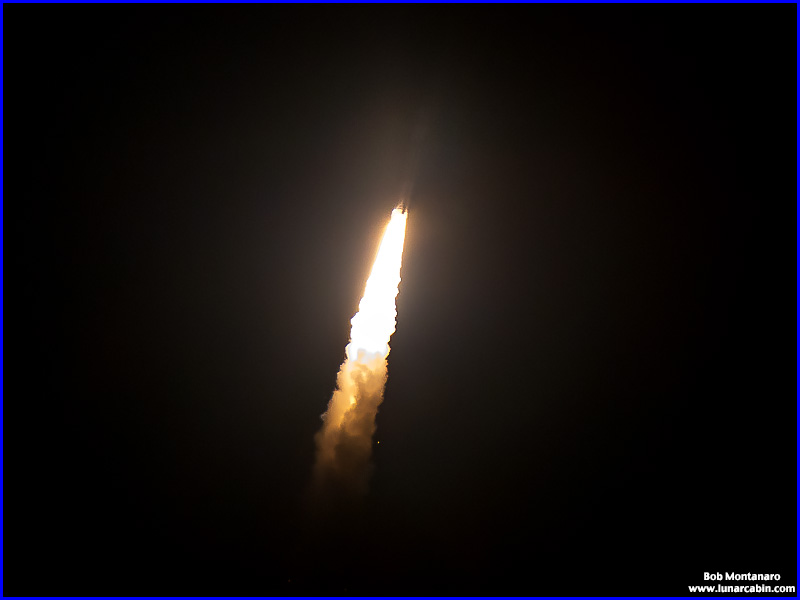 |
|
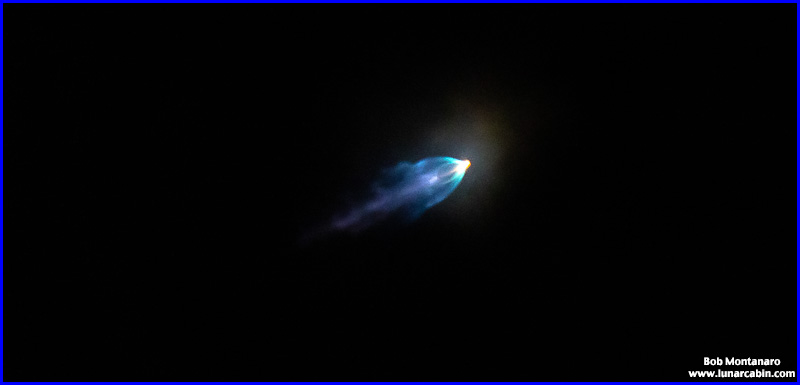 |
|
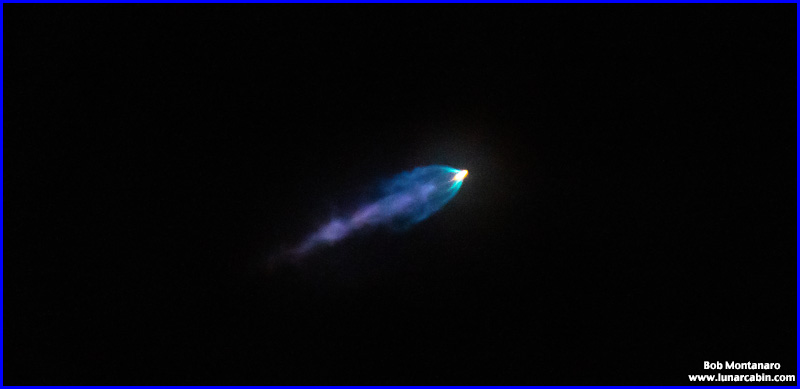 |
|
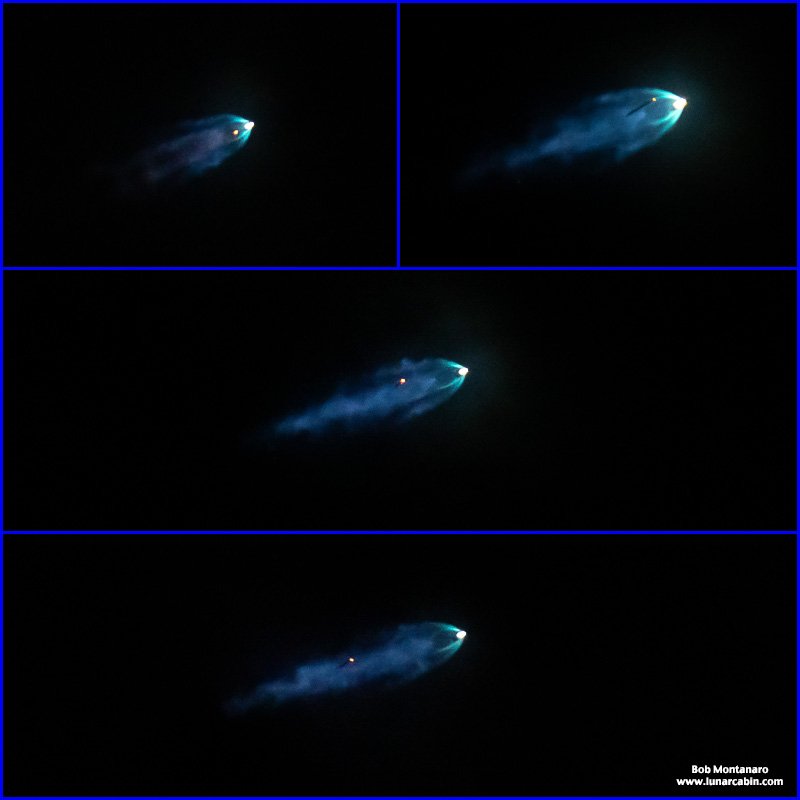 |
|
Solid rocket booster separation. |
|
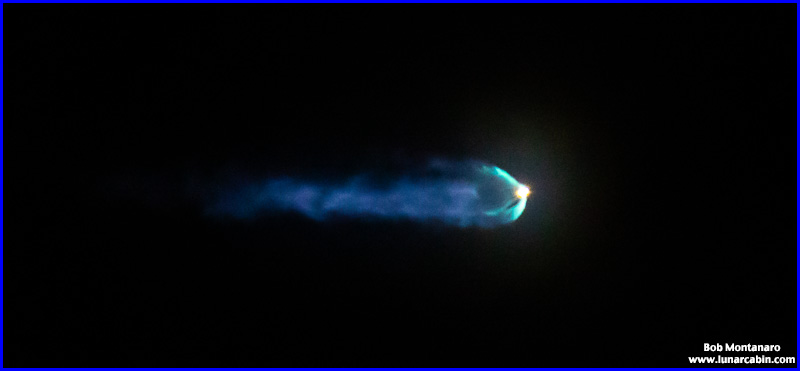 |
|
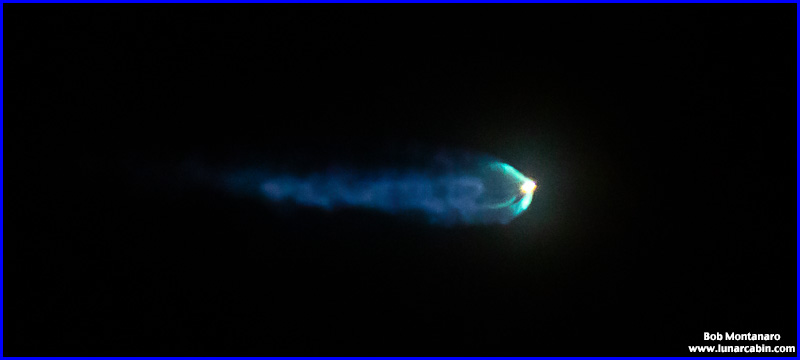 |
|
FROM UNITED LAUNCH ALLIANCE MEDIA RELEASE |
|
Payload Fairing Centaur V Booster IMAGE CREDIT: ULA |
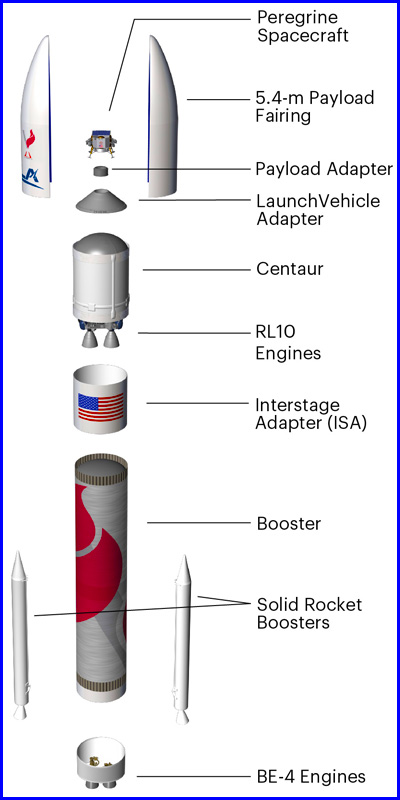 |
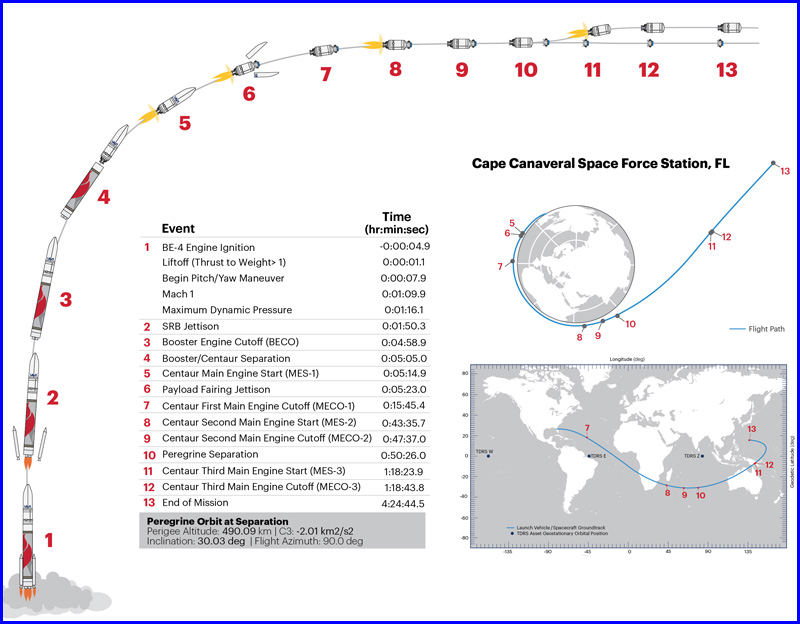 |
|
Vulcan Cert-1 flight profile. IMAGE CREDIT: ULA |
|
FROM NASA MEDIA RELEASE |
|
NASA Science, Astrobotic Peregrine Mission One Concludes The first flight of NASA’s commercial lunar delivery service carrying agency science and technology, as well as other customer payloads intended for the Moon, has come to an end. After 10 days and 13 hours in space, Astrobotic’s Peregrine Mission One made a controlled re-entry on Earth over open water in the South Pacific at approximately 4:04 p.m. EST on Jan. 18 [2024]. Astrobotic was the first commercial vendor to launch a mission to the Moon as part of NASA’s CLPS (Commercial Lunar Payload Services) initiative, which aims to advance capabilities for science, exploration or commercial development of the Moon under the agency’s Artemis campaign. There are seven additional CLPS deliveries awarded to multiple American companies, with more awards expected this year and for years to come. The next CLPS commercial flight is targeted for no earlier than February. Following a successful launch and separation from the rocket on Jan. 8, the spacecraft experienced a propulsion issue preventing Peregrine from softly landing on the Moon. After analysis and recommendations from NASA and the space community, Astrobotic determined the best option for minimizing risk and ensuring responsible disposal of the spacecraft would be to maintain Peregrine’s trajectory toward Earth, where it burned up upon re-entry. “Space exploration is a daring task, and the science and spaceflight data collected from Astrobotic’s lunar lander is better preparing NASA for future CLPS deliveries and crewed missions under Artemis,” said NASA Administrator Bill Nelson. “The future of exploration is strengthened by collaboration. Together with our commercial partners, NASA is supporting a growing commercial space economy that will help take humanity back to the Moon, and beyond.” Four out five NASA payloads on Peregrine successfully powered on and collected data while in flight:
NASA science teams are currently working to interpret the results. Preliminary data suggests the instruments have measured natural radiation and chemical compounds in the area around the lander. “Astrobotic’s Peregrine mission provided an invaluable opportunity to test our science and instruments in space, optimizing our process for collecting data and providing a benchmark for future missions,” said Nicola Fox, associate administrator for NASA’s Science Mission Directorate at NASA Headquarters in Washington. “The data collected in flight sets the stage for understanding how some of our instruments may behave in the harsh environment of space when some of the duplicates fly on future CLPS flights.” NASA is committed to supporting its U.S. commercial vendors as they navigate the challenges of sending science and technology to the surface of the Moon. |
|
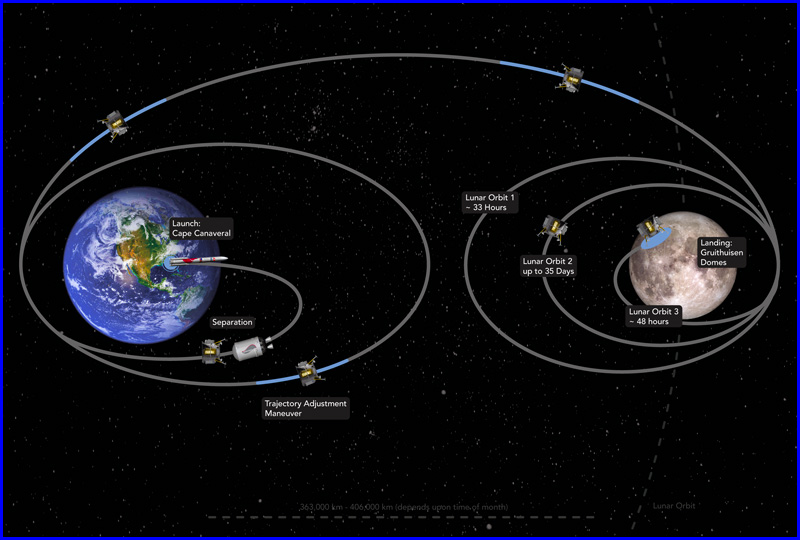 |
|
The Peregrine lunar lander's planned flight profile. IMAGE CREDIT: ASTROBOTIC |
|
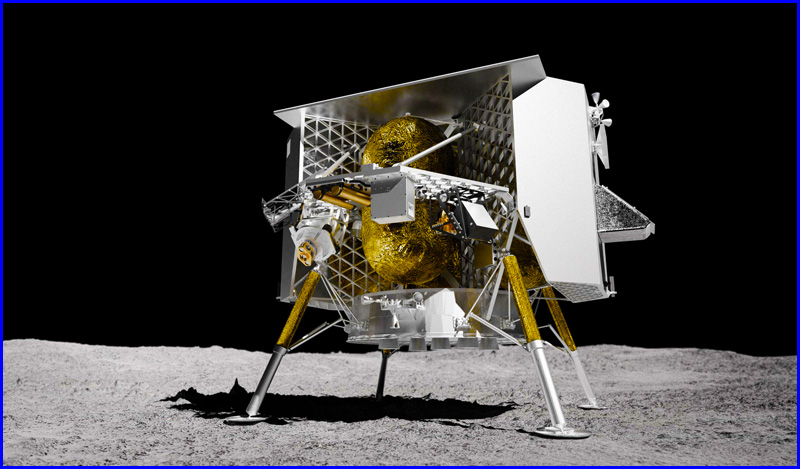 |
|
Artist rendition of the Peregrine lunar lander on the Moon. IMAGE CREDIT: ASTROBOTIC |
|
FROM A CELESTIS MEDIA RELEASE |
|
HOUSTON, TEXAS | JANUARY 26, 2022 - Celestis, Inc. announced today that it has entered into a launch services agreement with United Launch Alliance (ULA) of Centennial, CO. ULA will host a Celestis Memorial Spaceflight payload aboard the initial flight of ULA’s Vulcan Centaur, planned for later this year. Known as the Enterprise Flight (celestis.com/launch-schedule/enterprise-flight), the Celestis mission will launch more than 150 flight capsules containing cremated remains (ashes), DNA samples, and messages of greetings from clients worldwide on an endless journey in interplanetary space. “We’re very pleased to be fulfilling, with this mission, a promise I made to Majel Barrett Roddenberry in 1997 that one day we would fly her and husband Star Trek creator Gene Roddenberry together on a deep space memorial spaceflight,” said Celestis Co-Founder and CEO Charles M. Chafer. “The mission is named Enterprise in tribute to them - and also fellow mission participant and beloved actor, James “Scotty” Doohan - as well as the many Star Trek fans who are joining them on this, the 20th Celestis Memorial Spaceflight. We look forward to launching this historic mission on a rocket named Vulcan.” “We are honored that Celestis has selected ULA to launch this important mission,” said Tory Bruno, ULA president and CEO. “What a fitting tribute to the Roddenberry family and the Star Trek fans to be a part of the maiden flight of Vulcan, our next-generation rocket.” Celestis Enterprise Flight boasts an all-star crew like none other: Star Trek™ series creator Gene Roddenberry, his wife and “First Lady of Star Trek™” Majel Barrett Roddenberry, the DNA of their son Eugene “Rod” Roddenberry, “Mr. Scott” James Doohan, “Dr. McCoy” DeForest Kelley, VFX maestro Douglas Trumbull, “Lt. Uhura” Nichelle Nichols, and the DNA of her son, Kyle Johnson. The robust construction of the Celestis MindFile™ ensures your messages, images, art, music, and thoughts will “live long and prosper” despite the extremes of deep space. All MindFiles™ participants will also gain special access to exclusive Enterprise Flight launch and mission content. Vulcan Centaur’s maiden flight will showcase its tremendous performance as it enters service with a high-energy interplanetary mission. Vulcan will first put Astrobotic’s Peregrine lunar lander on a trajectory for its rendezvous with the Moon. The Centaur upper stage will then continue on to deep space, entering a stable orbit around the sun, with Celestis’ Memorial Spaceflight Payload. “ULA has a deep history with launching critical missions in support of national defense for our nation, so we are deeply humbled that many veterans also will be flying on this mission,” said Bruno. “It is an amazing recognition of their service and sacrifice to our country from their loved ones.” |
|
ULA VULCAN CERT-1 MISSION PATCH |
|
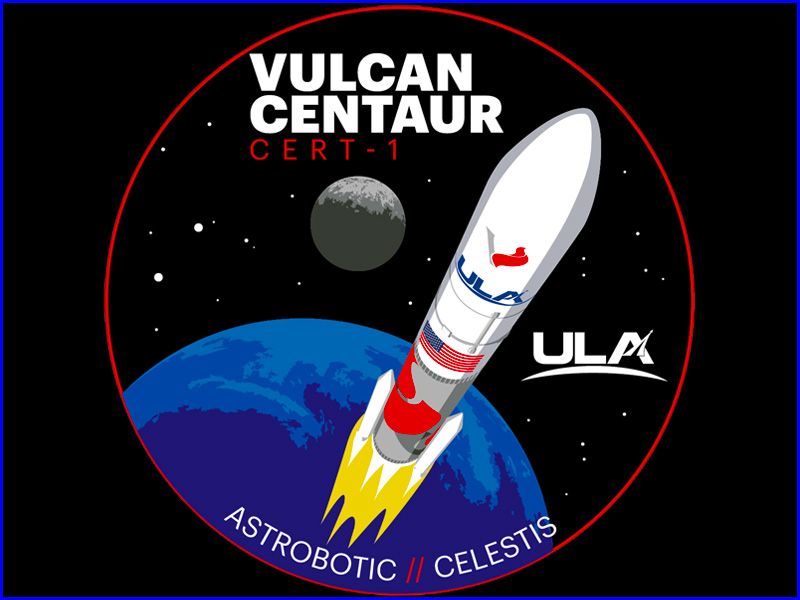 |
|
All contents copyright Lunar Cabin |
|